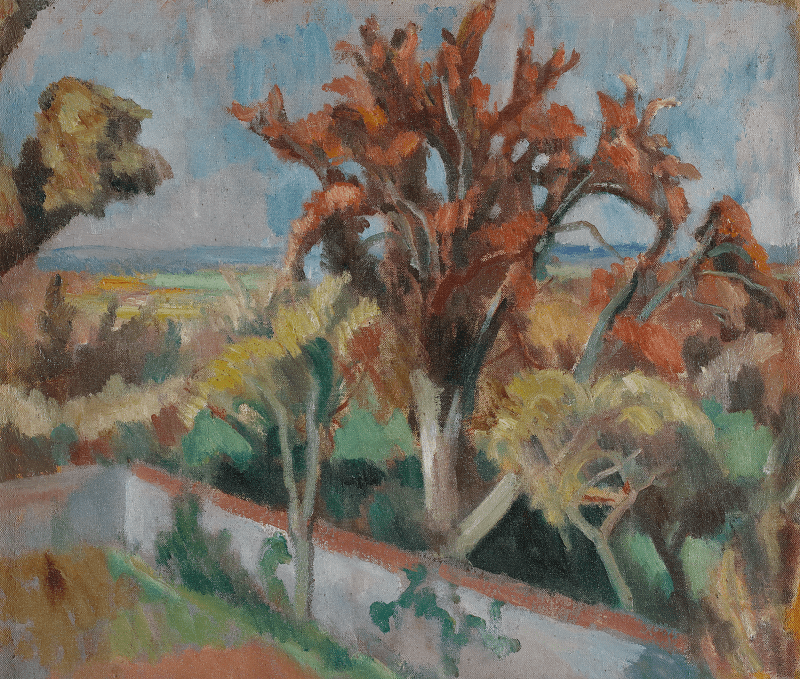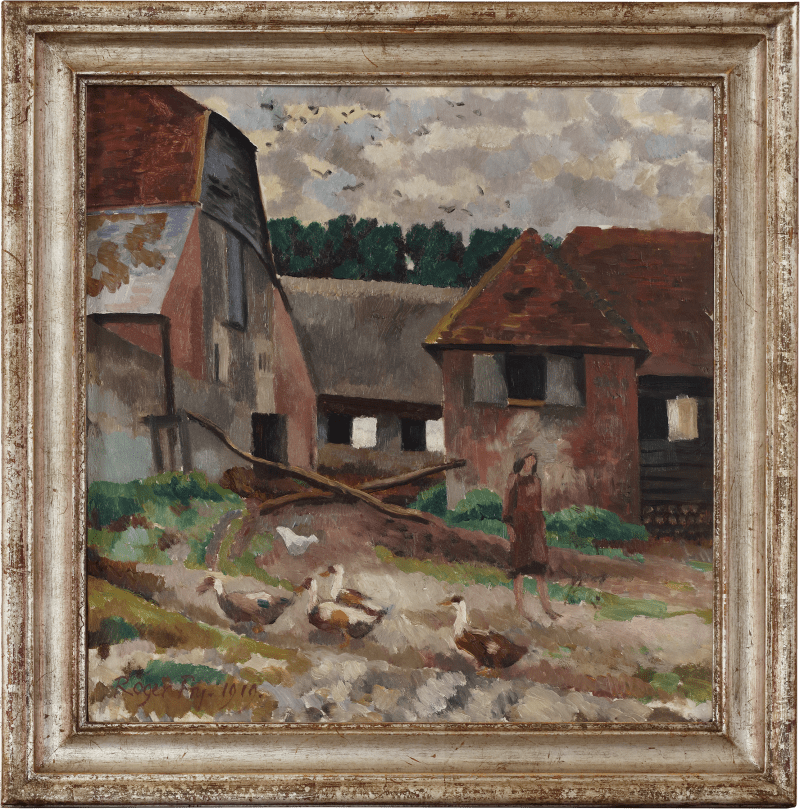This atmospheric study of Vanessa Bell was painted by Roger Fry, one of the most important figures in the history of British art, and captures a profound yet fleeting moment when the two were locked in an impassioned love affair. It was painted in the summer of 1911 during a period of rapid artistic change in Britain and is a rare survival from this seminal moment in Fry’s oeuvre.
In 1910 Fry staged his ground-breaking exhibition Manet and the Post-Impressionists, which introduced a new generation of British artists to modern French art and dramatically changed the course of British art history. Fry coined the term ‘post-impressionism’ through the title of his exhibition, which presented the work of artists such as Henri Matisse, Paul Gauguin and Vincent Van Gogh in England for the first time. Although the exhibition outraged many members of the public, and for a while cost Fry his reputation as an art critic, the Bloomsbury group...
This atmospheric study of Vanessa Bell was painted by Roger Fry, one of the most important figures in the history of British art, and captures a profound yet fleeting moment when the two were locked in an impassioned love affair. It was painted in the summer of 1911 during a period of rapid artistic change in Britain and is a rare survival from this seminal moment in Fry’s oeuvre.
In 1910 Fry staged his ground-breaking exhibition Manet and the Post-Impressionists, which introduced a new generation of British artists to modern French art and dramatically changed the course of British art history. Fry coined the term ‘post-impressionism’ through the title of his exhibition, which presented the work of artists such as Henri Matisse, Paul Gauguin and Vincent Van Gogh in England for the first time. Although the exhibition outraged many members of the public, and for a while cost Fry his reputation as an art critic, the Bloomsbury group met it with great enthusiasm and Fry became a central figure in their circles. Bell herself reflected on this period as ‘a time when everything seemed springing into life – a time when all was a sizzle of excitement, new relationships, new ideas, different and intense emotions all seemed crowded into one’s life. Perhaps I did not realise how much Roger was at the centre of it all.’[1] In 1912 Fry staged another show, The Second Post-Impressionist Exhibition, with the aim of introducing its visitors to the work of avant-garde British artists such as Eric Gill, Duncan Grant, Vanessa Bell, and Wyndham Lewis.
Seated in a deckchair in the garden of Fry’s home, Durbins, Vanessa Bell is shown here with her head gently angled toward the long length of patterned fabric draped over her knees. Her nearly featureless face attests to Fry’s deep admiration for Matisse’s work and alludes to the mask-like faces in paintings such as Dance I [fig. 1].[2] Bell herself employed this stylistic model in the portrait of her sister Virginia Woolf, executed a year after the present work [fig. 2].
Bell spent the summer of 1911 between Durbins and a nearby rented house called Millmead Cottage, whilst recovering from a serious bout of physical and mental illness. Unable to paint, Bell spent most of her time during this period recuperating outdoors, and several works from this date show her seated and sleeping in deckchairs. Throughout this period, Fry was an immensely attentive and reassuring presence; that summer, Bell wrote to him; ‘What nurse was ever so good as you…?’.[3] Their secretive and passionate love affair began during a shared family holiday to Turkey in 1911 and continued until 1913. Fry's relationship with Bell influenced his aesthetic ideas and theories and he championed her work deeply. Bell, on the other hand, found emotional and creative fulfilment in her relationship with Fry. Although the affair ended when Bell fell in love with Duncan Grant, they remained life-long friends and artistic partners [fig. 3].
[1] V. Bell, quoted in F. Spauling, Vanessa Bell. London: Tauris Parke, 2016, p.93.
[2] A. Gruetzner Robins (ed.), Modern Art in Britain 1910-1914. London: Merrell Holberton Publishers, 1997, p. 89.
[3] V. Nicholson, ‘My Dearest Roger’, Bonhams. Available at: https://www.bonhams.com/stories/32208/#/MR3_main_index_key=sale&m3=3 (Accessed: 13 May 2023).








